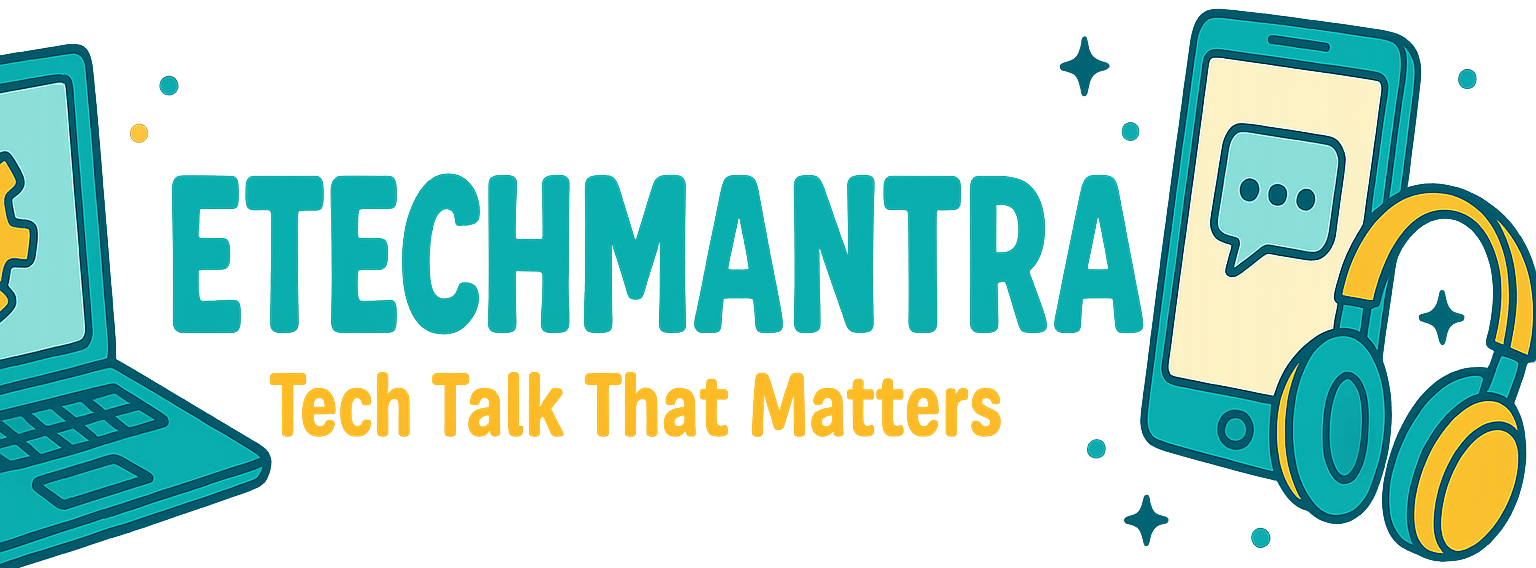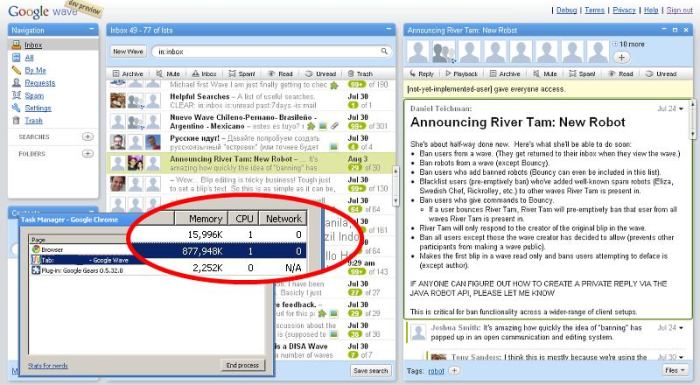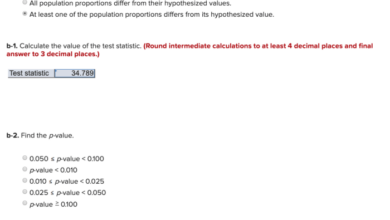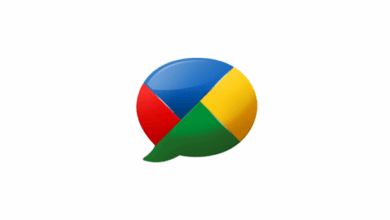Google Wave Beta Undertow or Potential?
Google wave beta some undertow but lots of potential – Google Wave beta: some undertow but lots of potential. This innovative platform, released during a pivotal time in internet communication, promised a revolutionary approach to collaboration and social networking. Early adopters were captivated by its unique features, yet challenges emerged. This exploration delves into the intricacies of Google Wave, examining its strengths, weaknesses, and the context surrounding its launch.
Was it a harbinger of the future, or just a flash in the pan?
The beta version of Google Wave presented a compelling vision for real-time communication and collaborative document editing. It attempted to break from the constraints of traditional email and instant messaging, offering a more fluid and dynamic interaction experience. The platform’s design aimed to integrate various aspects of communication, including text, images, and video, into a single, unified interface.
However, its ambition may have outpaced its technical capabilities and user adoption.
Overview of Google Wave Beta
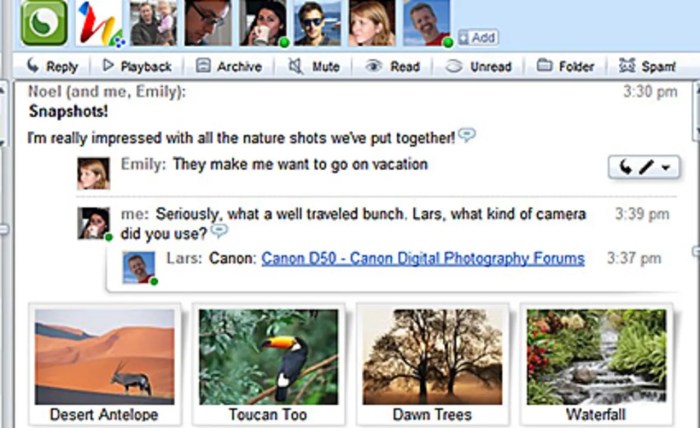
Google Wave, a revolutionary project from Google, aimed to redefine online communication and collaboration. Its beta release in 2009 presented a novel approach to real-time document editing and discussion, challenging the conventional email and instant messaging paradigm. This document will explore the core features, design principles, initial reception, and context of Google Wave within Google’s product ecosystem.
Core Features and Functionality
Google Wave’s innovative design centered around a persistent, threaded conversation space called a “wave.” Users could collaborate on documents, share updates, and discuss ideas all within this single environment. Waves offered real-time updates, allowing multiple users to edit and interact with the content simultaneously. This real-time collaborative editing was a key differentiator, promising a more dynamic and engaging approach to communication compared to traditional methods.
Importantly, waves were not limited to text; users could incorporate various media types, including images, videos, and other documents. This multi-modal approach was intended to create a more immersive and informative environment for collaboration.
Design Principles
The core concept behind Google Wave was to create a dynamic, unified platform for communication and content creation. It envisioned a single space where users could seamlessly integrate different forms of information, facilitating a more holistic and efficient approach to collaboration. The emphasis on real-time interaction and shared documents highlighted the platform’s potential to foster real-time brainstorming and creative problem-solving.
Google Wave also sought to reduce the fragmentation of communication channels by consolidating various functionalities within a single interface.
Initial Reception and User Feedback
Early user feedback on Google Wave was mixed. While some users praised the innovative approach and real-time collaboration capabilities, many found the interface complex and challenging to navigate. The sheer novelty of the platform created a learning curve for users, which some struggled to overcome. Further, the platform’s reliance on a novel approach to communication led to questions regarding its compatibility with existing workflows and user expectations.
Context within Google’s Product Ecosystem
Google Wave emerged during a period of rapid innovation in online communication tools. The project aimed to position Google as a leader in this evolving space, but it faced stiff competition from established players like email and instant messaging services. At the time, Google had a robust portfolio of products, and Wave was positioned as a complementary tool aimed at bridging communication gaps.
Key Features of Google Wave
| Key Feature | Functionality | User Feedback | Potential |
|---|---|---|---|
| Real-time Collaboration | Multiple users could edit and interact with documents simultaneously. | Positive feedback for its innovative approach; however, some found it complex to manage. | High potential for enhancing teamwork and brainstorming. |
| Multi-modal Support | Users could incorporate various media types (images, videos, etc.) within waves. | Positive feedback on the potential for more engaging content, but usability issues with diverse formats were reported. | High potential for richer and more interactive communication. |
| Persistent Threading | Conversations were structured in a threaded format, maintaining context across multiple interactions. | Positive feedback on its ability to preserve conversation history and context, but the complexity of navigating threads was a concern for some users. | High potential for improving the organization and searchability of communication. |
| Unified Communication | Integrated various communication features into a single platform. | Mixed feedback, some users found the unification helpful; others preferred separate tools for different needs. | High potential for streamlining communication workflows. |
Identifying the “Undertow”
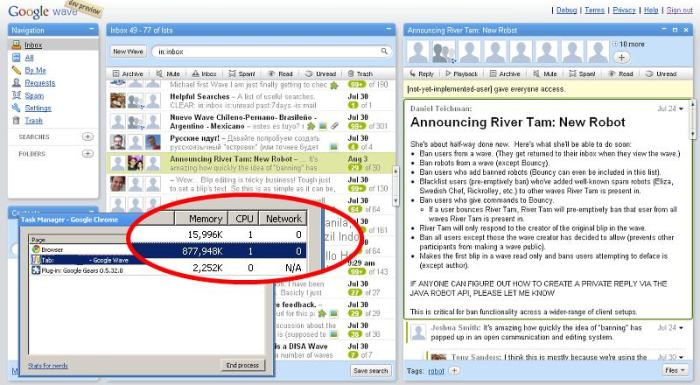
Google Wave, while possessing a compelling vision for collaborative communication, faced a significant hurdle in its adoption. This “undertow” wasn’t simply a lack of popularity; it represented a complex interplay of factors that prevented the platform from reaching its full potential. Understanding these factors is crucial to appreciating the lessons learned in the evolution of collaborative tools.
Potential Contributing Factors to the “Undertow”
Google Wave’s innovative approach, while groundbreaking, proved difficult for users to grasp. The platform’s dynamic, real-time nature, combined with its unique data representation, presented a steep learning curve. Many found the fluid and interactive environment overwhelming, especially in comparison to the more structured email-based workflows prevalent at the time. The asynchronous nature of traditional communication was deeply entrenched in user habits, making the constant flow of real-time updates jarring for some.
Further complicating matters was the platform’s relative complexity compared to simpler communication tools.
Technical Limitations and Shortcomings
Google Wave’s architecture, while ambitious, suffered from some technical limitations. The real-time, web-based nature of the application required robust server infrastructure and consistent internet connectivity, creating usability issues for users in areas with poor or inconsistent internet access. The platform’s reliance on JavaScript, while prevalent in web development, wasn’t always consistent across different browsers and devices. This inconsistency in rendering and performance led to frustration for some users.
Scalability concerns also played a role; managing a large-scale, real-time collaborative environment presented unique challenges.
Comparison to Competitors’ Products
At the time of Google Wave’s launch, competitors like email, instant messaging, and wiki-based systems were already well-established and integrated into the workflows of many professionals. Google Wave attempted to integrate many of these functions, but its innovative approach made it a less intuitive alternative for many users accustomed to the simpler interfaces of existing tools. The seamless integration with other Google services, while an advantage for some, was a disadvantage for those who were not already deeply entrenched in the Google ecosystem.
Google Wave beta had some hiccups, but it definitely showed promise. Similar to the initial excitement around that project, Bing is now aiming to bring visual search to the forefront, which could revolutionize how we interact with information. Bing aims to pull visual search into focus , highlighting potential that could, if implemented well, be a game changer.
This focus on visuals could be a big step forward, potentially reigniting the same kind of buzz that surrounded the Google Wave beta, though with hopefully fewer initial glitches.
User Adoption Challenges and Obstacles
User adoption was a significant challenge. The initial hype around Google Wave, while significant, didn’t translate into widespread adoption. The complexity of the platform, coupled with the steep learning curve, deterred many potential users. Marketing and user education efforts did not effectively address the needs of the target user base. The lack of widespread training materials and clear documentation further hindered user comprehension and engagement.
Furthermore, the need for users to embrace a completely new paradigm for collaborative work presented an obstacle to adoption.
Analysis of Problems, Root Causes, Impact, and Mitigation Strategies
| Problem | Root Cause | Impact | Mitigation Strategies |
|---|---|---|---|
| Steep Learning Curve | Unfamiliar interface and real-time interactions | Low adoption rate, user frustration | Improved user interface, clear tutorials, simplified workflow |
| Technical Limitations | Inconsistent browser support, scalability issues, reliance on strong internet connection | Irregular performance, technical difficulties, limited accessibility | Robust testing across various browsers, improved server infrastructure, enhanced offline functionality |
| Competition from Established Tools | Familiarity and ingrained workflows of users with other tools | Loss of market share, difficulty gaining traction | Strategic marketing highlighting unique features, targeted advertising to specific niches, collaboration with other tools |
| Lack of User Education | Inadequate training materials, poor user onboarding | Confusion, low user engagement, lack of understanding of functionality | Comprehensive user manuals, online courses, in-person workshops, community forums |
Evaluating the “Potential”
Google Wave, while experiencing a beta phase, demonstrated remarkable potential. Its innovative approach to communication and collaboration, though ultimately not reaching mainstream adoption, offered a glimpse into a future where conversations, documents, and shared workspaces could seamlessly intertwine. This evaluation delves into the specifics of that potential, examining its innovative aspects, anticipated social impact, and potential for workflow enhancement.Google Wave’s unique design anticipated trends in communication and collaboration, paving the way for features now commonplace in modern platforms.
This innovative approach showcased a forward-thinking vision of how people could interact and work together, anticipating the need for more dynamic and integrated tools.
Innovative Aspects of Google Wave
Google Wave’s innovative nature stemmed from its unique blend of real-time chat, document editing, and social networking functionalities. Its dynamic “wave” structure allowed for real-time updates and threaded conversations within a shared space, eliminating the limitations of traditional email chains and static documents. Users could simultaneously view and edit documents, fostering a collaborative environment unlike any seen before.
This anticipatory approach to communication and collaboration highlighted the potential of a platform that connected disparate elements in a single, evolving space.
Potential for Social Networking and Collaboration Features, Google wave beta some undertow but lots of potential
Google Wave’s collaborative features had the potential to revolutionize social networking. Imagine a social network where discussions weren’t confined to static posts but could flow dynamically, allowing for immediate responses and collaborative brainstorming. The ability to simultaneously edit and view documents in real-time offered an ideal platform for shared projects, group brainstorming, and even live-editing of creative works.
Google Wave beta had some hiccups, but the potential was undeniable. It’s interesting to compare that to Hulu’s recent digital content push – a fascinating look at the future of streaming, as seen in is hulus heave ho first salvo in digital content war. Ultimately, while Google Wave may have had its challenges, it still points towards a future where innovative communication tools are key.
The potential was enormous, offering a radical shift from the static nature of traditional social networks.
Anticipation of Future Trends in Communication and Collaboration
Google Wave anticipated the rise of real-time collaboration tools and the need for integrated communication platforms. Its design demonstrated an understanding of how communication was evolving beyond email and instant messaging, towards a more fluid and dynamic exchange of ideas. The ability to combine chat, document editing, and social networking in one platform showcased a vision for the future of how people work and interact.
This approach anticipated the need for platforms that seamlessly combined various communication modes.
Potential Impact on Workflow and Communication
The successful implementation of Google Wave’s collaborative features would have significantly improved workflows. Teams could have worked on documents simultaneously, eliminating the need for back-and-forth revisions and emails. Real-time communication would have minimized delays and improved efficiency in projects requiring quick responses. This collaborative environment would have fostered a sense of shared ownership and enhanced creativity within teams.
Such a platform could have dramatically streamlined project management and communication.
Evaluation of Google Wave’s Features
| Feature | Potential Use Cases | Advantages | Limitations |
|---|---|---|---|
| Real-time Collaboration | Project management, brainstorming sessions, creative writing, and simultaneous editing of documents | Increased efficiency, reduced communication delays, fostered a sense of shared ownership | Requires a consistent internet connection and training for new users; potential for confusion or overwhelming information overload |
| Integrated Communication | Combines chat, email, and document editing in a single platform | Streamlined communication, reduced context switching, and improved accessibility | Potential for information overload; required a shift in user habits |
| Dynamic Wave Structure | Threaded conversations, shared workspaces, and collaborative brainstorming | Improved organization of discussions, enhanced context awareness, and easy tracking of changes | Requires a new approach to communication and collaboration; learning curve for users |
Comparing to Contemporary Platforms: Google Wave Beta Some Undertow But Lots Of Potential
Google Wave, launched in beta, aimed to revolutionize online communication. Its innovative approach stood in stark contrast to the existing social networking and communication tools of the time, which primarily focused on static updates and one-to-one messaging. The platform’s ambition was to create a dynamic, collaborative workspace where users could seamlessly weave text, images, and other media into a unified conversation.The existing landscape, dominated by platforms like Friendster, MySpace, and early iterations of Twitter, lacked the real-time, collaborative features Wave offered.
This inherent difference presented both a unique opportunity and a significant challenge. Google Wave, while conceptually groundbreaking, needed to demonstrate its practical value and ease of use to gain widespread adoption.
Key Differences from Competitors
The distinguishing feature of Google Wave was its ability to combine instant messaging, social networking, and document collaboration in a single, fluid interface. Unlike traditional platforms that focused on broadcasting updates or direct messaging, Wave allowed users to engage in a continuous, real-time conversation that could be structured in various ways. This multi-faceted approach was a significant departure from the siloed nature of competing platforms.
Wave also introduced the concept of “waves” – persistent conversations where participants could add and edit content in real-time. This concept of dynamic, evolving threads contrasted sharply with the static nature of most social networks at the time.
Unique Selling Propositions
Google Wave’s unique selling propositions revolved around its real-time collaboration capabilities. Its ability to create and edit documents concurrently, allowing multiple users to work together simultaneously on a single project, was a major draw. The platform also showcased a significant departure from traditional approaches, allowing users to integrate diverse media types into a unified communication thread. This contrasted with platforms that kept different types of content separate.
Strengths and Weaknesses of Competitors
Traditional social networking platforms, like Friendster and MySpace, excelled at connecting users and fostering online communities. However, their lack of real-time collaboration tools and dynamic content creation limited their potential for collaborative work. Early iterations of Twitter, while popular for quick updates, lacked the nuanced conversational capabilities of Wave.
Comparison Table
| Platform | Features | Advantages | Disadvantages |
|---|---|---|---|
| Google Wave | Real-time collaboration, integrated document editing, dynamic conversations, multimedia integration | Innovative approach to communication, potential for collaborative work, dynamic content creation | Complex interface, steep learning curve, difficulty in mainstream adoption |
| Friendster | User profiles, networking, basic messaging | Early pioneer in social networking, established user base | Limited functionality, lacked real-time collaboration features |
| MySpace | User profiles, networking, basic messaging | Large user base, influential in its time | Limited functionality, lacked advanced collaboration tools |
| Microblogging, quick updates | Easy-to-use interface, quick dissemination of information | Limited to short updates, lacked deep conversation threads |
Analyzing the Technological Landscape
Google Wave’s release coincided with a period of significant evolution in internet technologies. The platform sought to redefine communication and collaboration, but its success hinged on how well it integrated with the existing ecosystem. Understanding the technological environment surrounding its launch is crucial to appreciating its challenges and potential.The internet in 2009 was a vastly different place than it is today.
While the basic architecture was established, standards and protocols were still developing. Web 2.0 principles, emphasizing user-generated content and interactive experiences, were gaining traction, but the tools for truly collaborative, real-time experiences were still nascent.
Prevailing Internet Technologies and Standards
The foundational technologies of the internet in 2009 were largely familiar. HTTP, HTML, and JavaScript were ubiquitous. Web protocols were being refined, but the concept of a truly dynamic, real-time web application was still a relatively unexplored frontier. XML and various data formats were in use, but the tools for seamless data exchange and synchronization across different platforms were not as mature as they are today.
This lack of established, widely-adopted standards contributed to the challenges Google Wave faced in achieving interoperability.
Evolution of Communication and Collaboration Tools
Before Google Wave, communication and collaboration tools were largely siloed. Email remained the dominant form of asynchronous communication. Instant messaging (IM) platforms provided real-time text-based interaction, but lacked the structured, threaded conversation features Google Wave aimed for. Shared documents and wikis offered rudimentary collaborative capabilities, but lacked the real-time, multi-user functionality that Wave promised. The tools existed, but they lacked the unified, integrated approach that Wave was intended to bring.
Google Wave’s Place in the Ecosystem
Google Wave’s innovative approach to real-time, collaborative communication presented a bold vision. Its focus on threaded conversations, simultaneous document editing, and integration with various other Google services created a unique ecosystem. However, its departure from existing standards and practices proved to be a significant hurdle. Wave required users to adopt a new way of working, which was not always compatible with the workflows established by existing applications.
Google Wave beta seemed to have some initial struggles, but it held a lot of promise. It’s interesting to see Google pushing further into Microsoft’s territory with its Outlook plugin, google edges deeper onto ms turf with outlook plug in , showing a continued commitment to innovative communication tools. Perhaps the lessons learned from Wave’s beta phase will help Google refine its approach in the future, allowing them to fully realize the potential of this type of technology.
The lack of widespread adoption by other developers and the need for extensive user training further contributed to the platform’s demise. Google Wave ultimately didn’t seamlessly integrate into the existing ecosystem; rather, it attempted to create a completely new one.
Comparison Table
| Technology | Description | Impact | Future Trends |
|---|---|---|---|
| HTTP | Hypertext Transfer Protocol, the foundation of data exchange on the web. | Essential for web browsing and data retrieval. | Continued evolution and adaptation for new protocols and applications. |
| XML | Extensible Markup Language, used for data representation and exchange. | Facilitated structured data exchange, but had limitations. | Replaced by newer formats in many contexts, but still relevant in specific niches. |
| Real-time Communication Protocols | Protocols enabling near-instantaneous communication. | Crucial for applications like video conferencing and collaboration tools. | Continued refinement and expansion, leading to more seamless and secure real-time interactions. |
| Shared Documents | Collaborative editing tools for documents. | Improved teamwork and real-time collaboration, but with limited capabilities. | Further evolution toward AI-powered tools for real-time assistance and intelligent collaboration. |
Exploring Future Implications
Google Wave, despite its initial beta fade, offered a compelling vision of future communication. Its unique blend of real-time collaboration, threaded conversations, and document integration hinted at a paradigm shift in how we interact digitally. Understanding its impact, both realized and unrealized, provides valuable insights into the evolution of communication platforms.
Potential Impact on Future Communication Tools
Google Wave’s core concepts, like real-time collaboration and threaded conversations, are becoming increasingly prevalent in modern communication tools. Slack, Microsoft Teams, and even more specialized platforms have adopted features mirroring Wave’s innovative design. This suggests a clear influence on the future of collaborative workspaces. The ability to weave multiple threads of discussion into a single, searchable context, as Wave attempted, is a powerful idea that continues to inspire new design approaches.
Lessons Learned from Google Wave’s Success or Failure
Google Wave’s ultimate failure to capture widespread adoption highlights the importance of user-centric design and intuitive interfaces. The complexity of its features, while ambitious, overwhelmed many users. This experience underscored the need for simplicity and clear user pathways in the design of complex applications. Furthermore, Wave’s failure to address the existing ecosystems of communication tools and services contributed to its demise.
The challenge of integrating into existing workflows and seamlessly connecting with other applications proved to be a significant hurdle.
Examples of Technologies or Concepts Inspired by Google Wave
Several modern platforms and technologies show the lasting impact of Google Wave’s innovative features. The rise of integrated document editing and real-time collaboration tools, found in platforms like Google Docs with real-time editing, are clear examples. The concept of interconnected threads of conversations, central to Wave’s design, is now seen in messaging platforms. Additionally, the notion of a unified workspace where communication and content creation intersect is a continuing theme in application development.
Long-Term Implications of its Design Principles
Google Wave’s design principles, while not fully realized in its initial form, laid the groundwork for several crucial advancements in the digital communication landscape. The emphasis on real-time collaboration and the merging of communication and content creation has influenced the design of modern platforms. Its attempts to create a dynamic, responsive, and connected environment have sparked innovation in how we use technology to interact.
| Concept | Explanation | Potential Impact | Future Implications |
|---|---|---|---|
| Real-time Collaboration | Simultaneous editing and interaction within a shared space. | Enhanced efficiency in collaborative tasks, improved real-time feedback mechanisms. | Continued integration of real-time features into communication and productivity tools. |
| Threaded Conversations | Organizing discussions in a structured, interconnected manner. | Improved context and searchability of conversations, reduced information overload. | Increased use of structured discussion forums and collaborative platforms. |
| Integrated Content Creation | Combining communication and content creation within a single platform. | Streamlined workflows and improved accessibility of tools. | Greater integration of communication and content management systems. |
| Dynamic Workspaces | Adaptable and responsive environments for interaction. | Increased flexibility in adapting to evolving project needs. | Emergence of more responsive and dynamic collaborative workspaces. |
Illustrative Scenarios
Google Wave, while possessing a compelling vision, ultimately failed to capture the market. Its ambitious approach to real-time collaboration, though innovative, couldn’t overcome the existing ecosystem of established communication tools. Understanding both potential successes and failures is crucial to learning from past ventures.
Hypothetical Successful Implementation
Imagine a global architectural firm, “Architects United,” leveraging Google Wave. Project teams, dispersed across continents, use Wave for real-time design collaboration. Architects could simultaneously annotate blueprints, discuss material choices, and resolve design conflicts in a shared, dynamic document. Wave’s threaded conversations would track the evolution of each design element, providing an audit trail of decisions. Real-time feedback loops, enabled by Wave’s collaborative features, would accelerate the design process and improve the quality of final projects.
The firm could also integrate Wave with their 3D modeling software, creating a seamless workflow. Client communication could be streamlined, with stakeholders receiving updates and feedback directly through Wave, fostering transparency and collaboration. This scenario demonstrates how Wave could optimize workflow and enhance communication within a complex organization.
Hypothetical Failure Case
A small startup, “QuickNotes,” attempted to build a customer service platform entirely on Google Wave. They envisioned agents resolving customer issues in real-time, leveraging Wave’s threaded discussions for detailed issue tracking. However, the steep learning curve for agents, coupled with the complexity of Wave’s interface, proved overwhelming. Training materials were inadequate, and agents struggled to adapt to Wave’s unique features.
Integration with existing CRM systems proved problematic, leading to data silos and a cumbersome workflow. The startup faced high employee turnover, and the lack of a clear user experience contributed to customer frustration. Their initial enthusiasm quickly dissipated as the challenges of adopting Wave outweighed the potential benefits. This failure highlights the importance of user-centered design and seamless integration with existing infrastructure.
Illustrative Use Case: Academic Collaboration
Google Wave could revolutionize academic collaboration. Imagine a group of researchers studying the impact of social media on political discourse. Using Wave, they could create a central repository for data analysis, share research findings in real time, and engage in discussions about emerging trends. Each research paper could be a Wave document, allowing for constant feedback and revisions.
The threaded conversations would record the evolution of their research, making the entire process transparent and accessible to the wider academic community. This demonstrates Wave’s potential for fostering collaborative research and knowledge sharing.
Impact on Business Operations
Google Wave, had it succeeded, could have transformed how businesses operate. Real-time collaboration, fostered by its threaded conversations and shared documents, would have drastically improved workflow efficiency. Projects could have been completed faster, and decision-making processes streamlined. The ability to instantly share updates and feedback across teams would have facilitated quicker responses to market changes. The potential for innovation and efficiency, coupled with increased transparency, is substantial.
Impact Analysis Table
| Scenario | Description | Potential Outcomes | Lessons Learned |
|---|---|---|---|
| Successful Implementation (Architects United) | Real-time collaboration on architectural projects | Faster design cycles, higher-quality projects, improved client communication | Seamless integration, user-friendly interface, and thorough training are crucial for success. |
| Failed Implementation (QuickNotes) | Customer service platform built on Wave | High employee turnover, customer frustration, data silos | User experience, integration with existing systems, and adequate training are critical success factors. |
| Academic Collaboration | Researchers collaborating on research papers | Enhanced knowledge sharing, faster research cycles, greater transparency | Wave’s potential lies in its ability to foster real-time collaboration and knowledge sharing across disciplines. |
| Business Impact | Transformation of business operations | Increased efficiency, faster decision-making, enhanced innovation | The ability to facilitate real-time collaboration and communication could revolutionize business processes. |
Epilogue
Google Wave, despite its initial struggles, showcased a glimpse into the future of online collaboration. Its ambitious design, while not achieving widespread adoption, left a lasting impact on the evolution of communication tools. This analysis reveals both the potential and the pitfalls of pushing the boundaries of what was possible at the time. Its legacy lies in inspiring subsequent advancements in online collaboration, even if its own experiment didn’t fully materialize.
